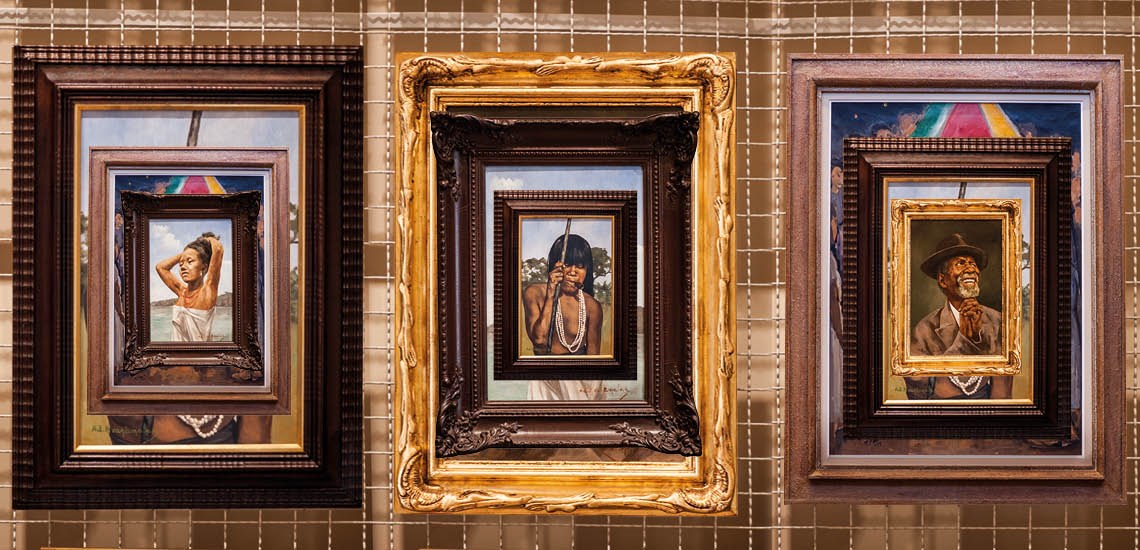Debates that have gained momentum over the last 20 years in fields of knowledge such as history and anthropology have led Brazilian museums to offer new ways of thinking, organizing, and displaying their collections to the public. Through curatorial proposals that engage participation from different sections of society, historical paintings are no longer presented as faithful reproductions of reality, artistic objects have been discovered in technical reserves, and ethnographic pieces have gained new layers of meaning.
– History museums discover treasures in technical archives
– Ethnographic museums reframe collections
This process of transformation, which started in academic and museological circles, was driven by public policies and can be seen today in exhibition halls at major institutions, and is aligned with discussions promoted since 2016 by the International Council of Museums (ICOM). The culmination of this movement is the new definition of museum approved by the council in August this year, with the incorporation of terms such as sustainability, diversity, community, and inclusion. According to ICOM, museums are institutions that “[…] research, collect, conserve, interpret, and exhibit tangible and intangible heritage,” they are “accessible and inclusive, foster diversity and sustainability” and, with the participation of communities, “they offer varied experiences for education, enjoyment, reflection, and knowledge.” Architect Renata Vieira da Motta, president of ICOM Brazil, assesses that the new definition works as a guide for Brazilian institutions to review their processes and practices, by reaffirming the importance of the social role of these institutions. “Furthermore, the definition should act as a reference for the formulation of public policies in the area of museums, contributing towards the construction of actions and programs,” she says.
In the opinion of historian Paulo Knauss, of Fluminense Federal University (UFF) and vice president of the Brazilian Historic and Geographic Institute (IHGB), from Rio de Janeiro, the new curatorial proposals represent a turning point for a large part of the traditional Brazilian museums that, according to him, remain linked to a type of curation marked by encyclopedic characteristics with a descriptive emphasis. “In the case of history museums, this means that exhibited pieces and paintings gained a status of truth and the representation of the past was confused with reality,” explains Knauss, who directed the National History Museum (MHN) between 2015 and 2020. As an example, he cites the painting Independence or Death!, by painter Pedro Américo de Figueredo e Melo (1843–1905), from Paraíba, which was restored and is on display in the Paulista Museum (see Pesquisa FAPESP issue no. 318). “By exhibiting works like this, it is necessary to perform curatorial work that evidences that it is not the incarnate past, but an interpretation of the past, instigating the viewers to reflect on why there are no slaves in the scene or why all the characters are wearing such clean outfits if they are in the middle of such a long and arduous journey. Therefore, it is possible to abandon a passive attitude and dialogue with what is observed, something that the Paulista Museum strives to facilitate,” adds the historian.
Despite the recent spread, transformations in curatorial proposals are part of a long process. Museologist Marília Xavier Cury, of the Museum of Archaeology and Ethnology of the University of São Paulo (MAE-USP), pinpoints the intensification of museums seeking to expand their role in society to the 1970s. “New history and anthropology research attitudes began to look at Indigenous peoples not only as objects, but also as subjects, and changed the collection management and acquisition policies,” she highlights.
Besides the role of scientific knowledge, museologist Mário de Souza Chagas, of the Federal University of the State of Rio de Janeiro (UNIRIO) and director of the Museum of the Republic, states that the National Policy for Museums: Memory and Citizenship, established in 2003 with the aim of democratizing the institutions and access to Brazilian cultural assets, also impacted the formulation of curatorial proposals. “In the Museum of the Republic, one of the results was the creation of the Lake Gallery which for around two decades has proposed relationships with the history of Brazil based on the work of contemporary artists,” he comments. The sculpture A grande peleja (The great fight), by Brazilian artist Paul Setúbal, from the state of Goiás, currently on display in the gallery, is an example of this dialogue. The work is a bronze replica of the helmet worn by the imperial guard of honor of Dom Pedro I (1798–1834), which also depicts Saint George fighting a dragon, and shows the helmet deformed by a blow from a spear. “Setúbal searches history for elements and symbols that speak of freedom and independence when, 200 years after the proclamation, we are still fighting to destroy the dragons that pursue us,” interprets Isabel Portella, director of the gallery.
Republish